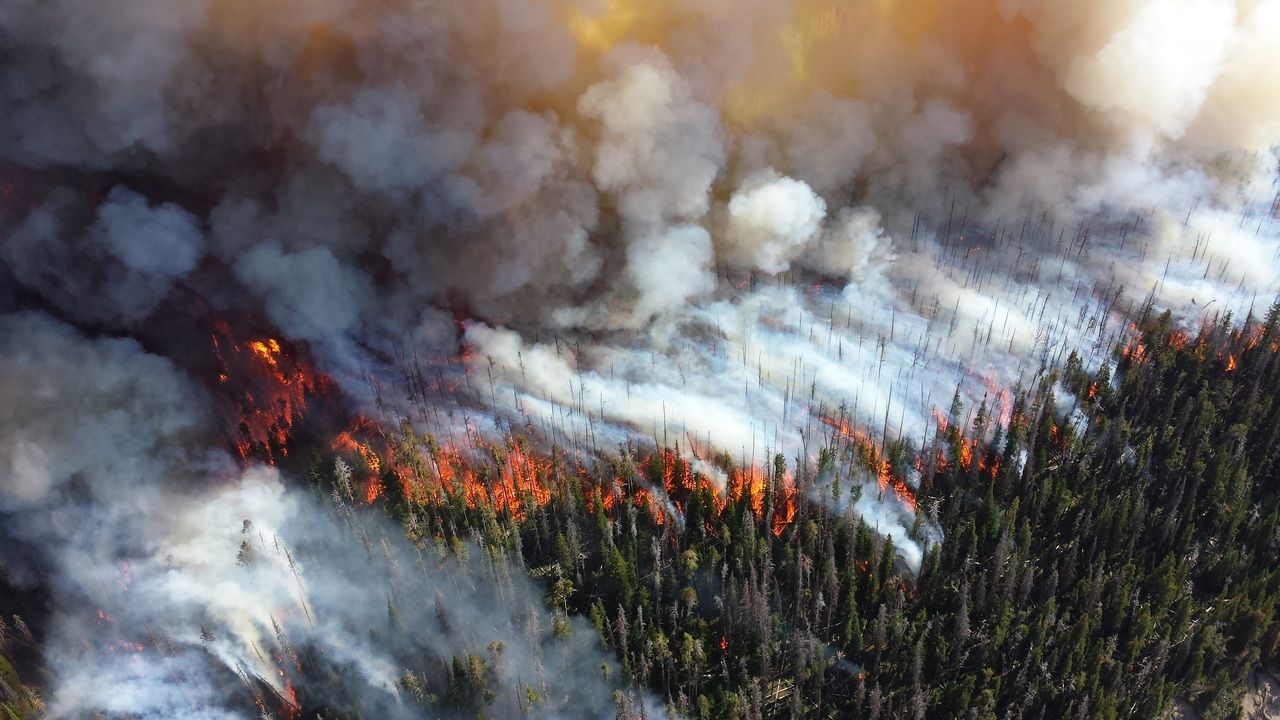Life insurers across Canada are preparing in case of an avian flu pandemic, the human and economic consequences of which would be catastrophic. Some insurers are sure that they are ready, while others are currently putting their plans in place.
The potential of an avian flu pandemic, caused by a virulent strain of influenza, is a pressing concern among life insurers in Canada. The entire industry is on alert. Especially worrisome in Asia, the pandemic threat is being taken very seriously in Canada, insurers interviewed confirm. In unison, they emphasized that they are closely tracking the progress of this disease.
Players such as Manulife Financial, Sun Life Financial and Cooperators Life say they have been prepared for months. For one, they have been including a pandemic in their catastrophic scenarios that they regularly update as part of their business continuity plans.
Now that these plans have been approved by their boards of directors, the insurers assert that they are well equipped to withstand even the worst case scenario, an avian flu outbreak that strikes Canada head on.
Meanwhile others such as Empire Financial Group and Desjardins Financial Security are presently working on their preparation plans. They expect to complete them soon, they said, without specifying a date.
Canadian authorities, including the Office of the Superintendant of Financial Institutions (OSFI), are also concerned. Three Canadian organizations, the Insurance Bureau of Canada, the Canadian Life and Health Insurance Association (CLHIA) and the Canadian Bankers Association (CBA) received a letter from the OSFI on March 20.
The letter probed insurers on the solidity of their crisis plans for a possible flu outbreak. “Above all, we wanted them to be aware of this risk. Then, we wanted to know what strategy they plan to adopt to ensure that their members can continue working in case of a pandemic. Lastly, we wanted to know if they have considered the impact on their solvency,” Julie Corbett, communications manager at OSFI explained.
While the CBA confirmed that its members are ready to execute their business continuity plans, the CLHIA said it had only recently begun to assess this problem. At press time in March, CLHIA spokesperson Wendy Hope told The Insurance Journal that it was calling its insurers to a meeting in late March to coordinate an industry response and to measure the impact of a pandemic on the Canadian life insurance market.
Potential catastrophe
Avian flu caused by the H5N1 virus is a viral disease found in wild and domesticated birds. While this affliction is easily transmissible between poultry and to other animals, pigs, for example, the virus has infected very few humans.
However, if the infection were to cross the species barrier and become contagious from human to human, the consequences could be disastrous both in terms of the number of casualties and the impact on the global economy, international organizations predict.
In the United States, economic losses for the life insurance industry could reach US$133 billion in benefits paid to insured, says the American consumer information organization Insurance Information Institute in a report published in February (see box).
The World Bank puts potential economic losses caused by a pandemic at roughly US$800 billion. The disease could infect between 25% and 35% of the global population and cause at least 7.5 million deaths, says the World Health Organization.
At the national level, Health Canada foresees that an avian flu pandemic could cause between 4.5 million and 10.6 million people to fall ill and would kill 58,000 Canadians. Economically, such a pandemic could erode 5% of the gross national product, plunging the Canadian economy into a serious recession.
In a report published at the end of March, Fitch Ratings, a global ratings agency, predicts that life insurers and their reinsurers would be hardest hit by a bird flu pandemic. Fitch estimates that 400,000 deaths could occur in Europe and 209,000 in the U.S. in a bird flu pandemic.
Under these assumptions, Fitch considers that the increase in claims could amount to as much as $18 billion in the United States and $20 billion in Europe. The agency said it is difficult to determine how much of the risk could be passed onto reinsurers, although it would likely be a substantial amount. Fitch considers that such a claims scenario would be tolerable for the life insurance industry, although some players would be more affected than others.
Heavyweights ready
Despite the bleak outlook, the largest players in terms of capitalization – Sun Life, Great-West Life, Manulife and Cooperators Life – say they are ready to face the threat. Nothing has been left to chance in their business continuity plans, they insist.
The insurers pointed out that they have foreseen several scenarios of bird flu contagion, ranging from the least serious to the most catastrophic, and are poised to adapt their operations to each case.
The plans centre on human and financial resources management intended to guarantee solvency in a crisis and management of daily operations such as customer service and payment of benefits to insured, they explain.
Vice-president of investor relations at Sun Life, Tom Reid, says that Sun Life has formed a steering committee to coordinate the insurers’ response. Members include top management from various international subsidiaries.
Mr. Reid adds that the company is robust enough to survive the worst crisis. Sun Life examined several scenarios to determine its chances of survival in the worst economic circumstances.
“One of the extreme scenarios we looked at is that our operating expenses could jump up dramatically by 20% if ever we needed to find people to replace employees,” he says. “Some may be absent because they are ill, or because they will take care of relatives who are ill. Others won’t get to work from fear of being exposed,” adds Mr. Reid.
Sun Life also assessed the possibility of insurance benefits’ spiking because of a sharp rise in the mortality rate, Mr. Reid explains.
“And even in the severe scenario – given our strong capital and surplus levels – we could withstand the estimated claims and other losses and still have sufficient capital to manage the business going forward,” Mr. Reid adds. He stopped short of disclosing any figures relating to Sun Life’s levels of capital and reserves.
Dan Thornton, president and chief operating officer at Cooperators Life, offers a similar perspective. “We are very strong from a financial perspective. Of course, there would be a significant hit on our capital and surplus in case of an outbreak but it wouldn’t affect our ongoing operations. We would still meet OSFI’s as well as our internal guidelines for operations.” He declined to reveal the amount of the insurer’s surplus.
Solvency tests
Mr. Thornton points out that in the last two years, Cooperators Life’s annual solvency tests have taken into account risks associated with a possible pandemic.
“We estimate a number of ugly things that are possible and we report to our board. We let them know how our capital and surplus would be impacted if catastrophic events were to take place. We presented the last report to our board in December 2005.”
“We think [avian flu] is a threat,” he continues. ”We have developed a comprehensive plan in response to a possible pandemic. We did this after the SARS incident. It looked like it could get very serious. At that time we took steps to include the threat of a pandemic in our catastrophe plan.”
The insurers plan is divided in two. One section deals with assessing the impact on mortality on our individual life and group life business, Mr. Thornton explains.
The other section of the plan concerns maintenance of operations in the event of a high absenteeism rate, he adds. He explains that Cooperators is technology equipped to let its employees work from home. The insurer is also relying on backup sites to continue its operations, he says.
Like Sun Life and Cooperators, Quebec-based SSQ Financial Group has gone so far as to estimate the number and amount of claims a pandemic would generate, says Élaine Dumais, communications manager. The insurers are keeping these figures to themselves, for strategic reasons. The company’s survival will not be jeopardized in case of flu. At worst, it will be a difficult year,” Ms. Dumais explains.
Continuity plan
“We already have a continuity plan that foresees several events, including avian flu. We are already well structured here. We have developed preventive measures adapted to different situations. We will reinforce hygiene to prevent contagion.
“Currently, the risks are low. But if cases are reported, we will certainly intensify measures,” she continues.
If the large buildings are quarantined by the public authorities, SSQ says it has back up sites in Montreal, Toronto and Quebec City where it can continue to offer its services.
“We have also evaluated the mobility of employees to meet urgent needs according to the knowledge of each individual. Some can hold various positions. Our priority will be disability insurance benefits, as opposed to sales, for example.”
Sun Life has produced a plan to adapt the work load rather than reassign human resources to be able to continue serving clients. “It is easier to mobilize the work load than employees, especially if they are stricken by this disease,” Mr. Reid explains, “We have several offices in Canada to do the work and we also have offices abroad, from which we serve some of our Canadian customers.”
“A portion of our American operations are serviced by a call centre situated in Lethbridge, Alberta, which means that mobilizing work across the Sun Life universe is possible in case of the onset of a pandemic,” he points out.
Asian operations
“The most plausible scenario is that our Canadian offices will have to serve our Asian clientele. The most common stream of thought is that the crisis will be more acute in Asia than in Canada,” Mr. Reid adds. With operations in China, Indonesia and notably India, Sun Life is very present in Asia, where the first cases of bird flu were reported.
Manulife and Great-West commented only briefly on this issue. “We continue to monitor the avian flu situation, as we do any other issue with the potential to have an impact on our industry,” said Marlene Klassen, director of media and public relations at Great-West.
“We have business continuity plans and risk management processes in place designed to help us continue functioning in the event of a business disruption,” she added.
Manulife also gave a similar response, yet both companies emphasized that they are well prepared.
Response in the works
Empire Financial Group says it is actively working on updating its contingency plan in case of bird flu. For now, the 10 members of the insurer’s business continuity team have initiated a dialogue on this topic with the public authorities, says Julie Tompkins, manager, corporate communications and member of the continuity team.
In the worst case scenario, Empire expects up to 50% of its employees to be absent. “We have dedicated a resource to help us determine the scope of the issue and identify where to take further action from a number of different perspectives, whether that perspective is human resources [or business continuity],” Ms. Tompkins explains.
“At this point we are really in a heavy information gathering phase to try to determine what to do. The thing about the pandemic is that we don’t know if or when it is going to happen. But you have to plan assuming that it will and plan accordingly,” she continues.
Desjardins has no choice but to analyze this issue, said André Chapleau, director, information and media relations.
Desjardins is asking its groups to find a response to the absence of employees or problems arising from public security, Mr. Chapleau explained.
“For example, we know that large gatherings are a breeding ground for pandemic. Large buildings may have to close to avoid spreading the virus. That is why we are trying to find ways to provide business continuity if these buildings are off limits,” he said.
“If the authorities’ scenario of 35% of the population affected bears out, we will have to launch a plan that will allow business continuity with 35% of our employees absent,” Mr. Chapleau said.
“To replace them, Desjardins will not hesitate to re-enlist retirees,” he added. “The advertising and marketing staff will be reassigned to more essential tasks. We are weighing all these possibilities.”









